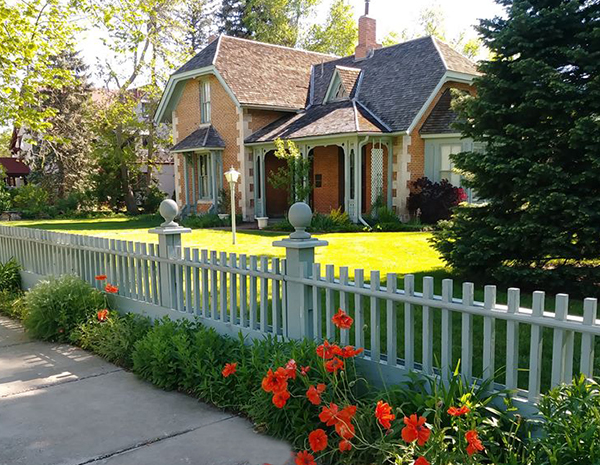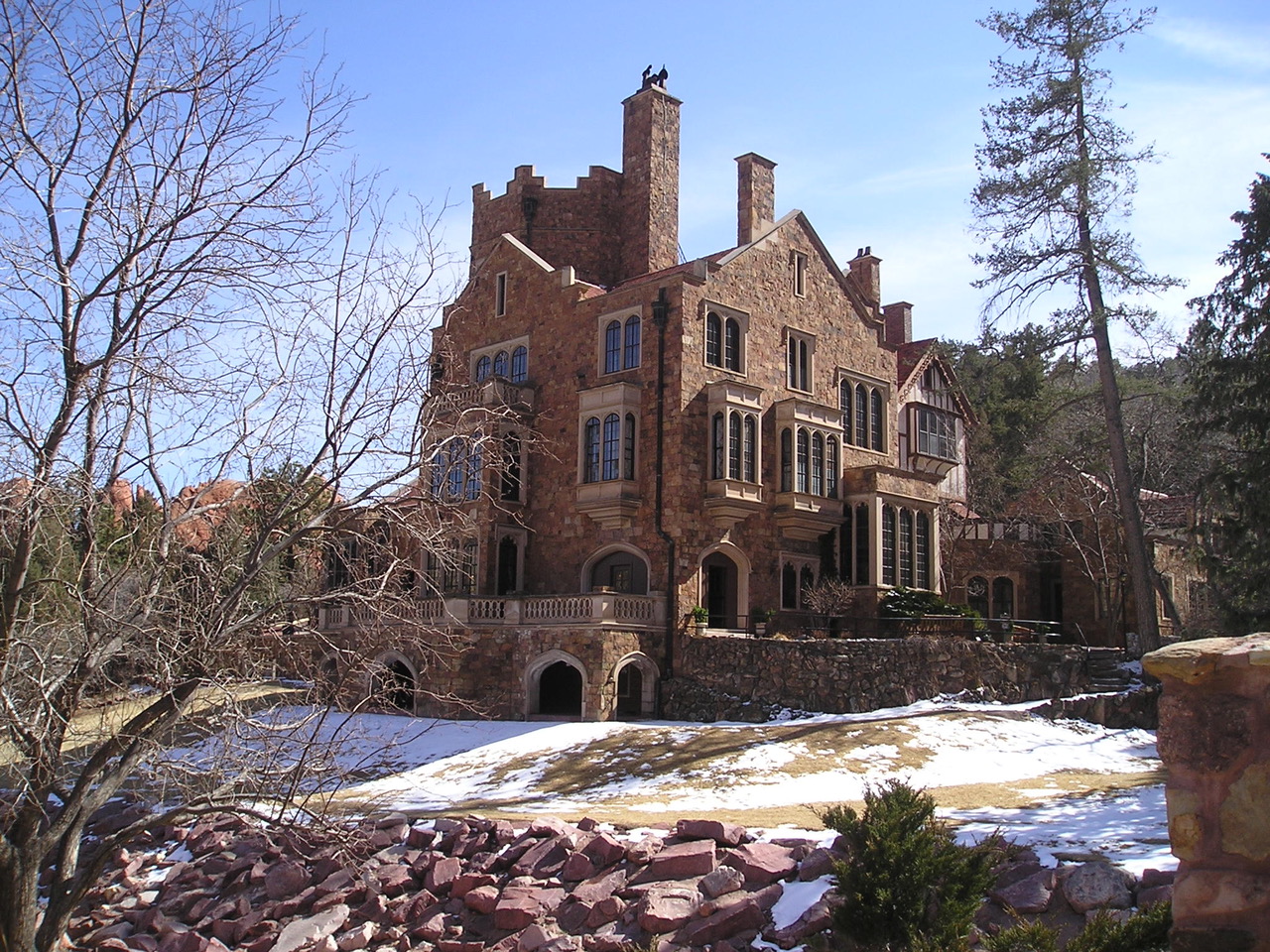
Story
Two Friends and Two Houses
A Partnership That Helped Build Colorado Springs
My hometown of Philadelphia has a name that translates to “city of brotherly love,” which certainly implies goodwill. But until I visited Colorado Springs, I hadn’t come across a historical friendship that helped to create a city.
Colorado Springs founder and railway entrepreneur General William Jackson Palmer, himself originally from Philadelphia, was all about friendship, particularly with the men who had served under his command in the Civil War. In one of his journal entries, Palmer reflected on “how fine it would be to have a little railroad, all under control with one’s friends…a host of good friends from my regiment should occupy the various positions.” Of the soldiers in his regiment, he was particularly close to his officers: The historian Samuel Eliot Morison once wrote that Palmer hand-picked his officers, “every one a gentlemen, and they were his friends.” But of all his soldiers, the one who Palmer invited to run his land development company in southern Colorado was his Civil War staff officer and fellow Philadelphian, Henry McAllister Jr.
This friendship between two men from my hometown was on my mind when my daughter and I picked up my parents and aunt from their Philadelphia-to-Denver flight for a week of sightseeing in Colorado Springs, including a visit with some high school friends who now call Colorado Springs home. As my extended family explored the area’s attractions, from the Colorado Wolf and Wildlife Center to the Cave of the Winds and the top of Pikes Peak, we noted whenever we came across certain historical names such as Penrose, Tutt, Palmer, and McAllister—all of whom knew each other and who came to Colorado from the Philadelphia area.
Following a Friendship
William Palmer and Henry McAllister were both born in 1836 in Delaware and grew up near Philadelphia. Both were Quakers, also known as the Religious Society of Friends, who opposed war and slavery. Despite their pacifism, both joined the Fifteenth Pennsylvania Cavalry to help in the fight to abolish slavery. Appointed to the rank of Brevet Brigadier General at 28, Palmer became the youngest general officer to fight in the Civil War while McAllister rose to the rank of major.
After the war ended, Palmer would use his knowledge of trains, mining, engineering, fundraising, exploration, and leadership to build a regional transportation empire centered in Colorado. McAllister remained in Philadelphia, working as what today might be called a corporate executive assistant. In 1872, Palmer asked McAllister to come to Colorado. Mirroring their wartime roles, Palmer was the tactician and McAllister was the administrator. For the next few years, they would work together to expand the Denver & Rio Grande Railway and to help spur development of Fountain Colony, which was renamed Colorado Springs in 1879.
These men would work together throughout their lives to achieve Palmer’s dream: a Colorado city with Quaker values such as moderation, civility, and friendship. In Palmer’s words, Colorado Springs would be a place of “schools, colleges, and science…the most attractive place for homes in the West.”

Built in 1873, the McAllister House was modeled after an English farmhouse design as envisioned by renowned American landscape architect Andrew Jackson Downing.
The McAllister House Museum and Glen Eyrie
Today, visitors to Colorado Springs can get a sense of these men, their families, and their values by visiting their homes—the McAllister House Museum in downtown Colorado Springs and Palmer’s Glen Eyrie estate near the Garden of the Gods.
Built in 1873, the McAllister House is one of the oldest buildings in downtown Colorado Springs. With its antique dolls, clothes, furniture, quilts, and lace, along with its residential setting, the sturdy and compact brick building reflects a family that achieved success and influence but chose to live practically and modestly.
Glen Eyrie, in comparison, is a grand mansion, built in 1871 and remodeled to resemble a Tudor castle in the decades that followed. Hidden in a secluded canyon with dramatic rock formations similar to those at Garden of the Gods, Palmer’s massive residence indicates his wealth but also his inquisitive mind, his dedication to family, his love of the local scenery, and a gracious sense of hospitality.
Both homes are well-built, comfortable, English-influenced, and on the National Register of Historic Places, but it’s much easier to see their differences than their similarities. After taking tours at both houses, I asked McAllister House Museum Executive Director Eric Metzger for his thoughts on what the houses have in common. He responded, “Both were family-focused homes where the two men conducted the business of the town and the railroad. Both homes were also built with marketing in mind: McAllister’s home was meant to show that people from back east could live here in comfort, while Glen Eyrie was something that Palmer built for his wife but also was meant to draw large-scale investment to the area. Both men wanted to bring Philadelphia culture to Colorado and to see the town succeed.”

General William Palmer Jackson’s mansion at Glen Eyrie, named for a nearby eagle’s nest, was extensively remodeled to resemble a Tudor castle.
William and Henry
As Quakers, McAllister and Palmer were modest men who shunned the spotlight, and Palmer famously refused to cooperate with an effort to write his biography. As a result, relatively little is known about them other than the little that they wrote about themselves and what their friends, family members, and business associates have shared. One is left with a sense of needing to read between the lines. We may never know if Palmer and McAllister addressed each other as “General” and “Major” in their city-building days in Colorado and as they grew to be old men, or if they followed the Quaker tradition of calling each other “thee” instead of “you,” which was intended to indicate equality.
We do know that when Palmer’s wife died at a young age, McAllister helped Palmer through his grief by keeping him socially connected to the community. We also know that McAllister reflected in a letter to his old regiment, “Greater than his triumphs on the field of battle are the triumphs in his character…triumphs that have won for him the undying love of his comrades in arms, of the people of this community, and of all whose privilege it is to know him.”
With such a close mutual background and a lifetime of collaboration, I imagine that these men shared a deep friendship that colored much of what they accomplished in their extraordinary lives. And I like to think that despite the incredible growth that Colorado Springs has seen since it was founded, the spirit of their friendship remains in the city, just like the thousands of cottonwood trees that they planted downtown nearly 150 years ago.
